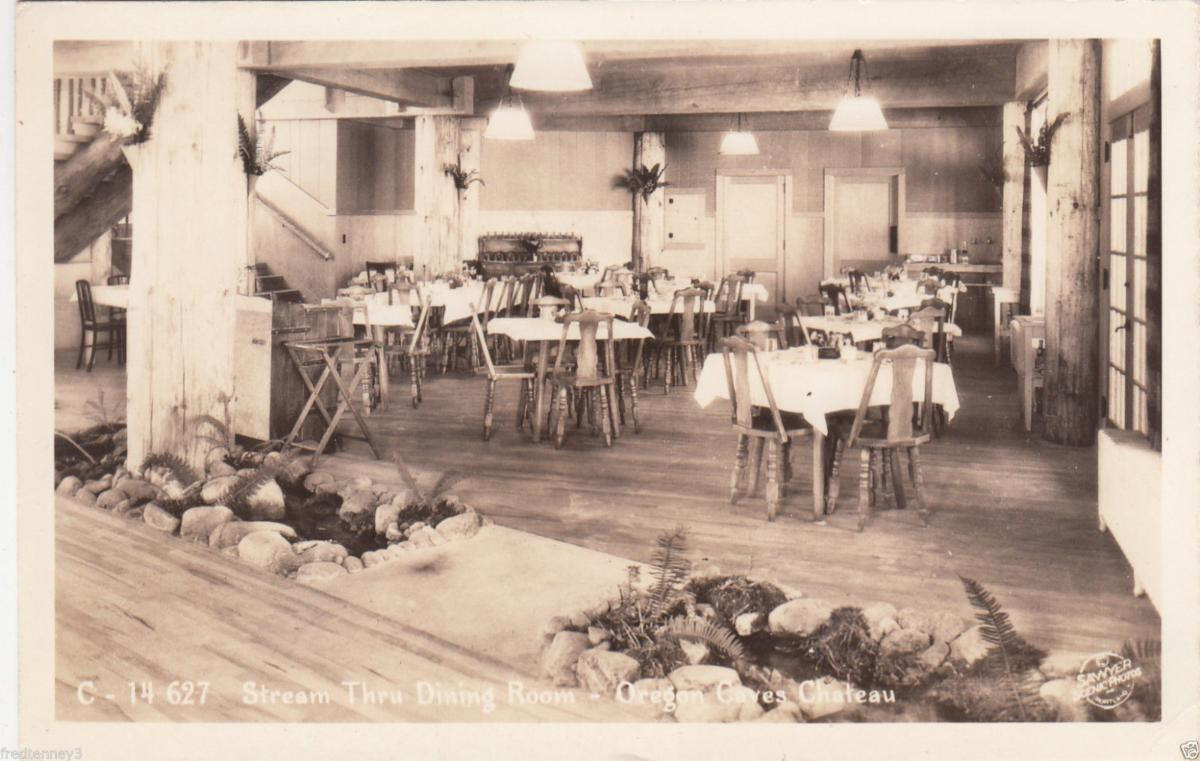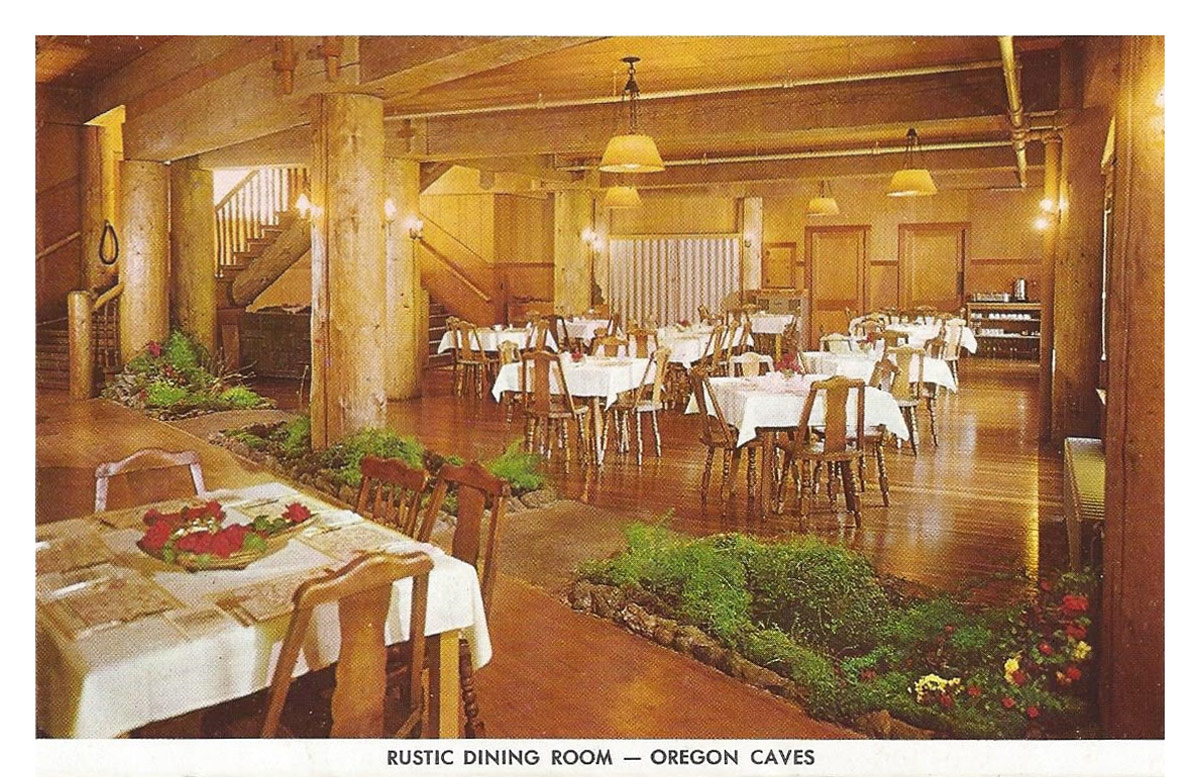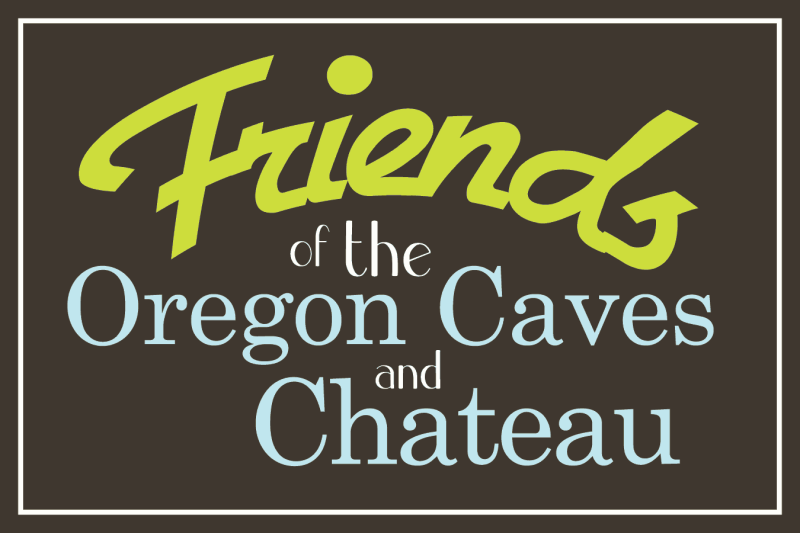Listen to the sounds of the cave while dining…..
When the Chateau was built in the Canyon, the designer/architect Gust Lium needed to either design around or include Caves Creek. His brilliant idea was to bring the creek right through the dining room to remind you of the sounds in the Cave. Including the natural environment inside the very walls of the building is referred to as “Parkitecture”, or National Park Service rustic. The design philosophy seeks “to create buildings that harmonize with the natural environment”. The Oregon Caves Chateau is one of the best examples in the NPS.
What a fun way to help restore the Chateau. We all love the creek – and hearing the sounds of the cave.


More about Parkitecture
National Park Service rustic – sometimes colloquially called Parkitecture – is a style of architecture that developed in the early and middle 20th century in the United States National Park Service through its efforts to create buildings that harmonized with the natural environment.
Since its founding in 1916, the NPS sought to design and build visitor facilities without visually interrupting the natural or historic surroundings. The early results were characterized by intensive use of hand labor and a rejection of the regularity and symmetry of the industrial world, reflecting connections with the Arts and Crafts movement and American Picturesque architecture.
Architects, landscape architects and engineers combined native wood and stone with convincingly native styles to create visually appealing structures that seemed to fit naturally within the majestic landscapes. Examples of the style can be found in numerous types of National Park structures, including entrance gateways, hotels and lodges, park roads and bridges, visitor centers, trail shelters, informational kiosks, and even mundane maintenance and support facilities. Many of these buildings are listed on the National Register of Historic Places.

